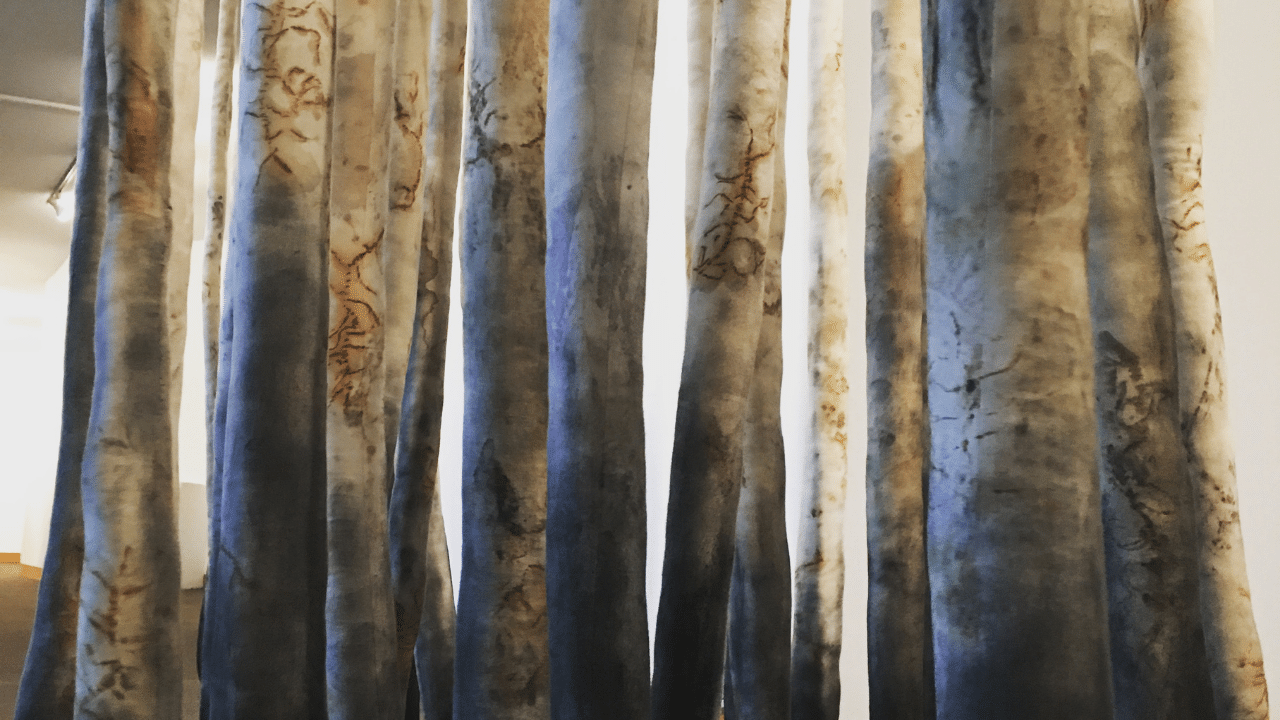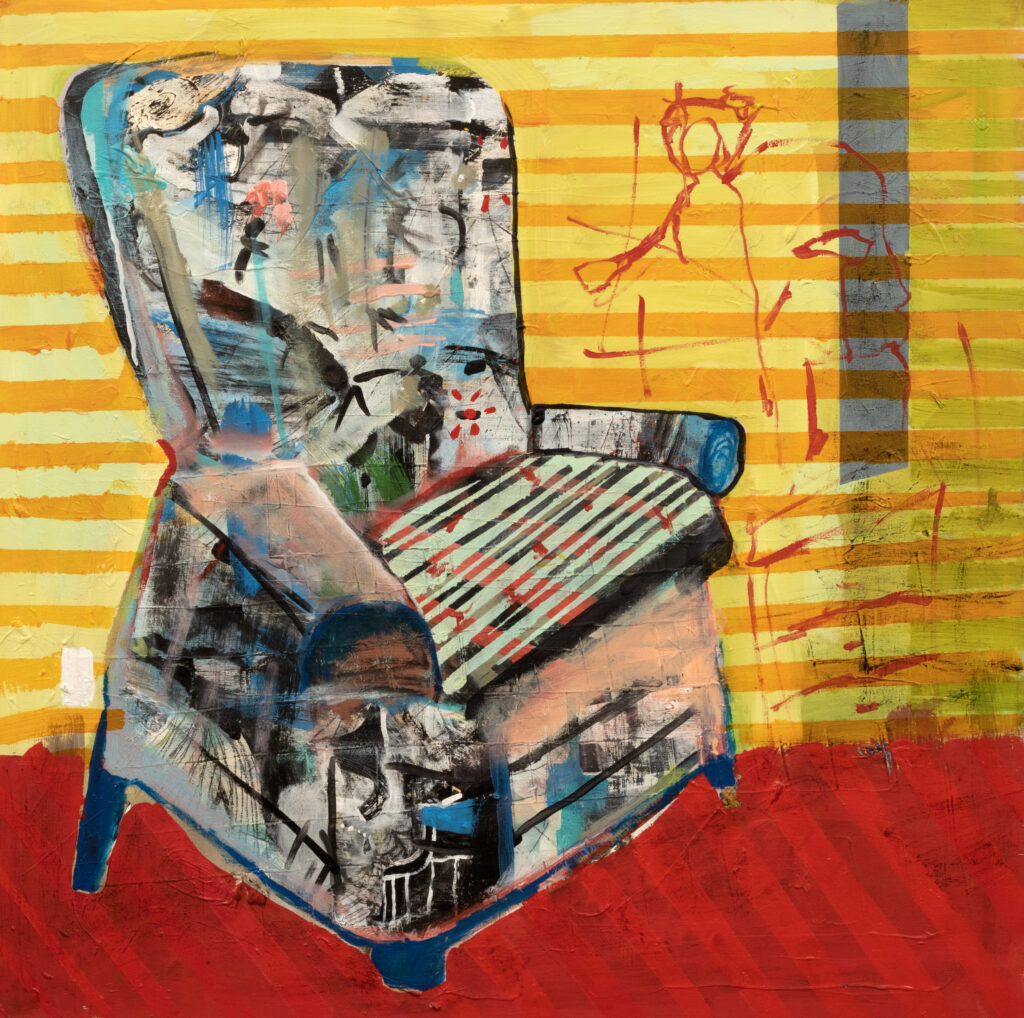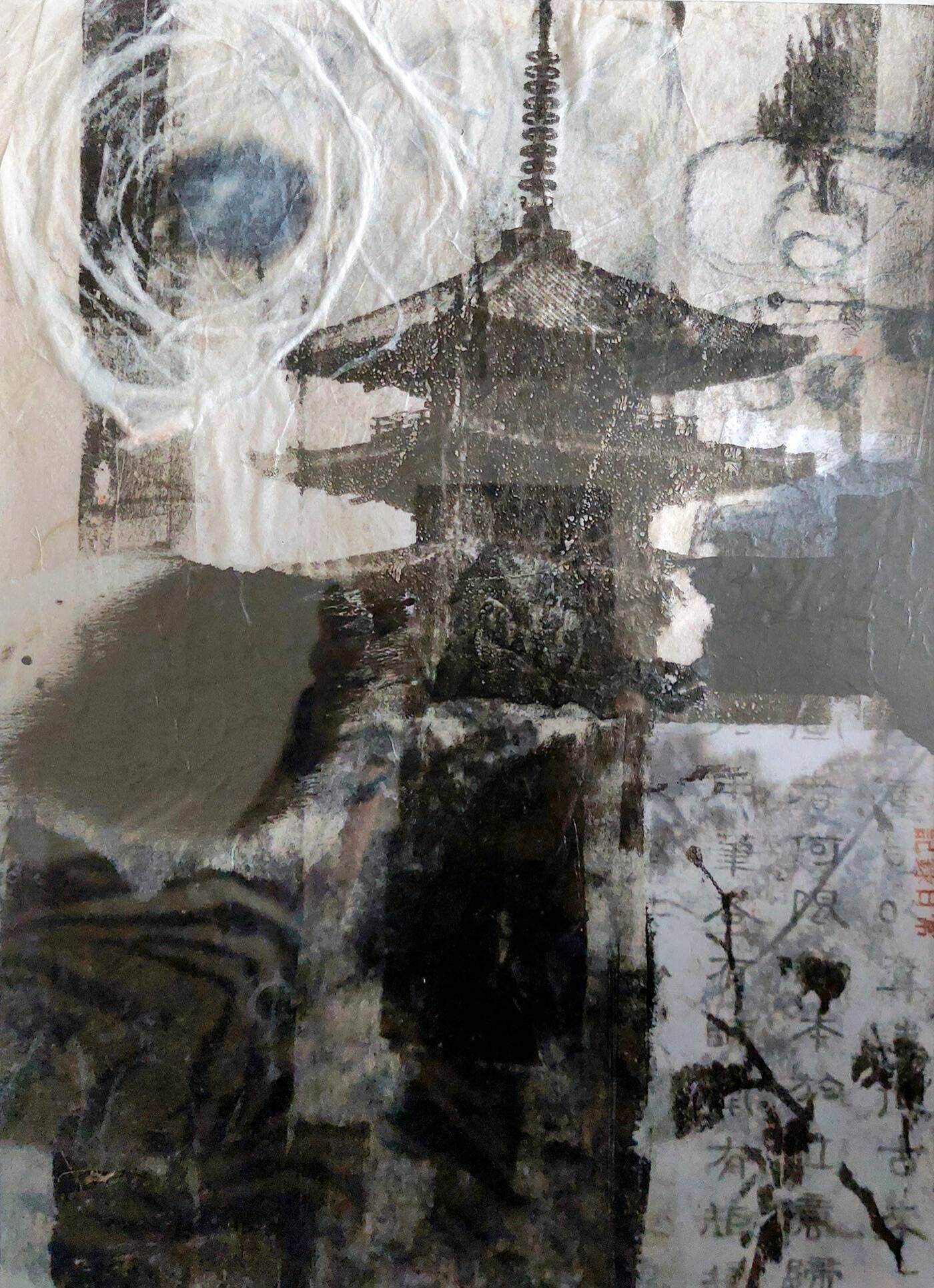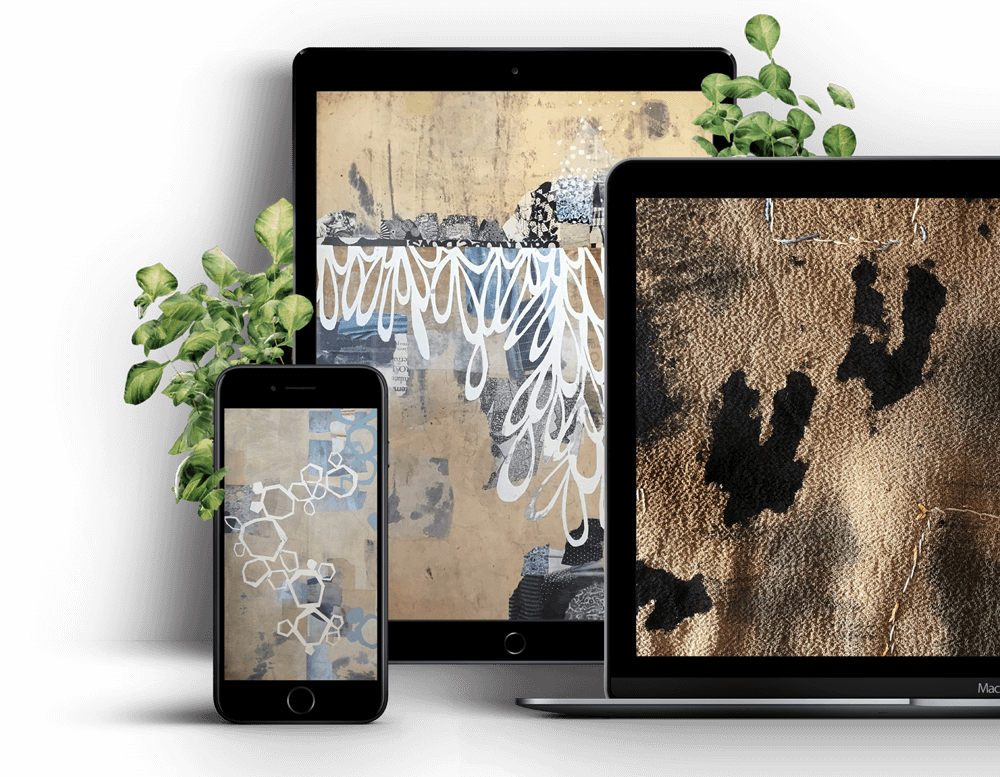Clarissa Callesen: Getting it Wrong
Fibre Arts Take Two had an inspiring chat with artist Clarissa Callesen. Check out what Clarissa had to say about teaching, creativity, and organisation.
Clarissa’s Friday Feature Artist Interview can be found at the bottom of this page.
Clarissa Callesen has been fortunate enough to work as a self-employed artist for the past 30 years, doing her best to live a passionate, authentic, creative life. She’s no amateur when it comes to digging deep into our own thoughts and judgments about creativity and the way we feel about our own artwork.
Clarissa challenges the norm and pushes the boundaries with experimental and unique ways of embellishing recycled textiles and incorporating found objects into her thought-provoking and emotion-evoking fibre sculptures.
As an experienced tutor, Clarissa loves sharing her wild and crazy techniques and her philosophies about creativity and authenticity with others. She has a unique way of gently unpicking what’s inside our brains, allowing us the freedom to view the world and our own artwork from a new perspective. As a creative coach, she knows exactly when to give a little nudge to students to help them push past any limiting beliefs to create from a place of authenticity. Clarissa talked to Fibre Arts Two about teaching, creativity, and organisation and even shared her unique meditative technique.
Teaching creativity
Clarissa finds teaching creativity to be a highly rewarding pursuit. “It’s so special,” she says, “And to hear people’s voices and to watch what people do every time I’m in a class. It’s not just the students learning; I am learning just as much. I can bring forward a concept or technique that I’ve done 100 times and talk about it to a group of people, and then I watch them take it in all these places that I’ve never thought about. That is one of the most magical things about being a teacher; it’s one of my favourite things, to walk around the room and just see the diversity of different interpretations and different feelings; that’s my delight.”
Clarissa believes that creativity is not an innate gift possessed only by a select few. “Creativity is a skill,” she says. “There’s this idea that creativity is like something that you are born with; it’s something that magically comes down from the heavens. I believe in magic, and, and all of that, that’s beautiful. But actually, the foundation skills. You need to learn to be creative.”
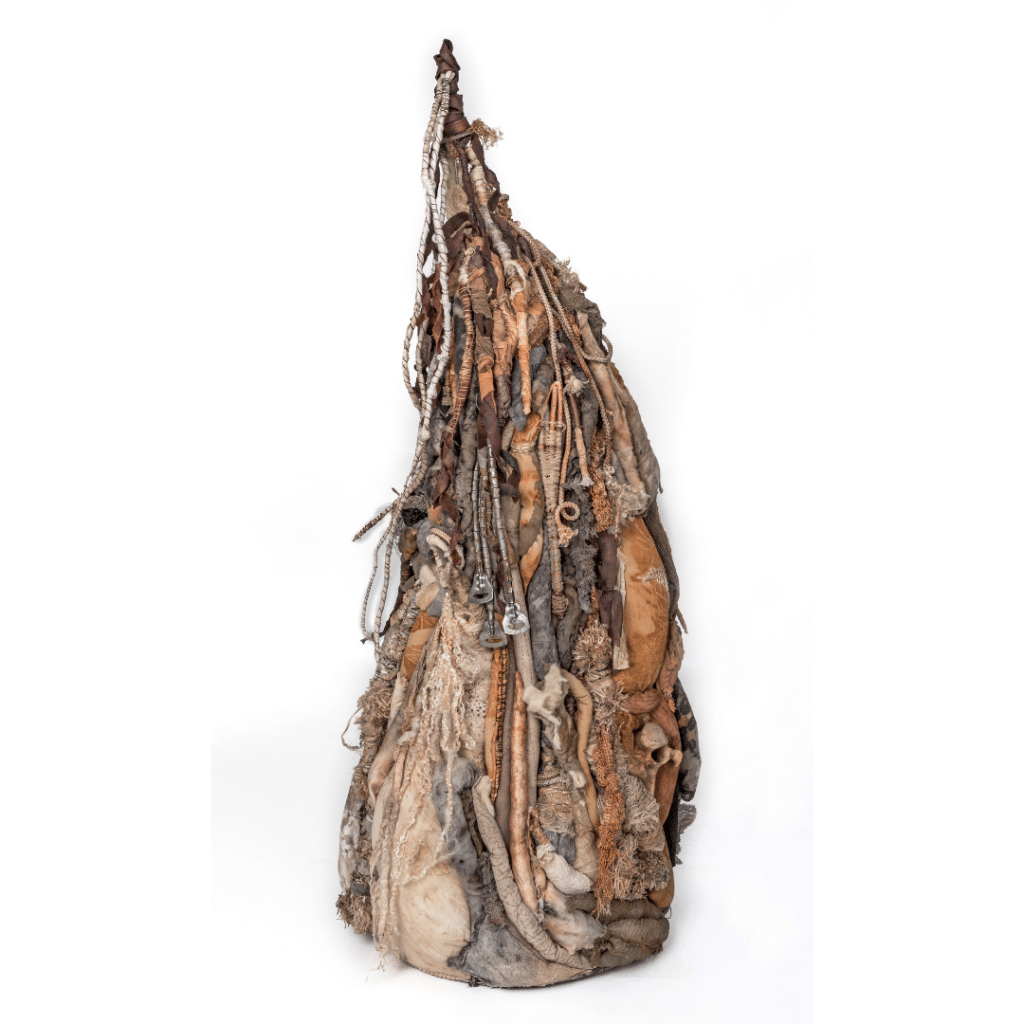
Getting it wrong
Part of learning to be creative is getting it wrong. “Some of that learning is actually somebody saying, ‘You have to practice, and you have to be bad’,” says Clarrisa, “We don’t let ourselves be bad when it comes to creativity. When you learn how to play the piano or the violin, there are all kinds of horrible noises that come out. But guess what? They just disappear; they’re gone. When we learn how to draw or stitch or paint or anything, we have practice pieces, but somehow because we have to look at them over and over again, it gains more significance than needed. It literally is just practice.”
Practice is the crux of creativity to Clarissa, “Learning to be creative is about showing up and practising. It’s about showing up and being bad. It’s the equivalent of going to the gym when you’re sore or putting on your running shoes when it’s raining. We think somehow that creativity exists in some other magical, magical bubble that involves drugs and pacing around and black clothing and all this drama when actually it involves a lot of hard work and tenacity and showing up. Anyone can learn how to do it. Anyone can learn to be creative.”
Getting organised
Clarissa spent some time imparting invaluable advice on how she organises her workspace. “How do we not get overwhelmed by that stuff, but also, how do we not spend all our time organising our materials instead of working? What I like is a balance; of a bit of organisation and a bit of chaos. For me, it makes sense to gather my work by a colour scheme. If I know I’m going to be using pinks, I have a palette of pink.”
Taking the time to organise can also lead to happy surprises, “Because I’ve just put shades of colour together, I might end up putting together two pieces that I normally wouldn’t put. Perhaps I wouldn’t normally use those, but because they have randomly gotten in there, I think I like the combination.”
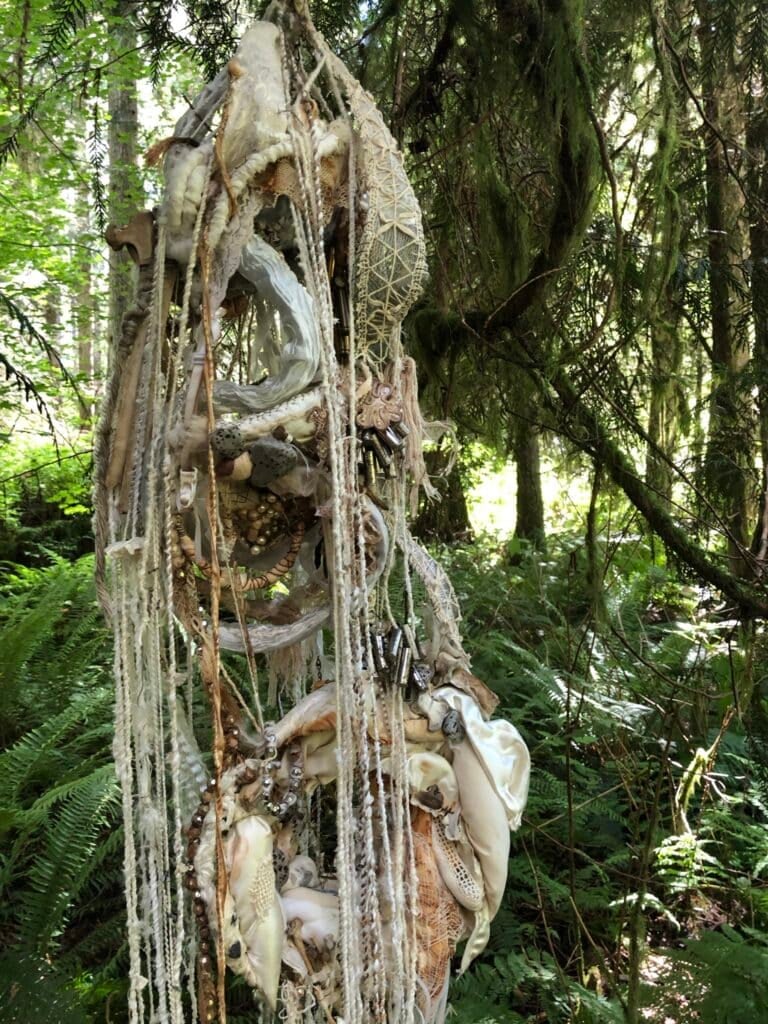
Balancing the chaos
The rigid structure is not the answer either. According to Clarissa, “I also do a certain amount of putting things in similar categories in boxes; some places in my studio, they’re actually labelled. This is not so labelled,” chuckles Clarissa, pointing to an unlabelled box, “So there’s also a certain degree of chaos here. There are some theories about chaos, about chaos versus organisation. Studies have found that a certain amount of chaos actually leads to creativity and to better connections.”
Ultimately, it comes down to finding the right balance for you. Clarrisa explains, “Spontaneity that comes from disorganisation can really be a source of creativity. With that said, there are limits for all of us as to how chaotic we can work. You are the one that’s going to know that. For me, when I’m working on a project, things get crazy. But I need to clean them up at some point, or my brain doesn’t work. I want you to not avoid making art by organising. Sometimes that is a thing that we use to avoid the hard work of creativity. We spend all our time rearranging our stuff. Make sure that you’re not doing that. And do what works for you.”
Seeing Without Identifying
Clarissa kindly shared with us the fabulous meditative technique she calls Seeing Without Identifying. “I spent a lot of time doing walks,” she says, “and you know, you can do a walk, and you cannot see anything around you. Because you’re just busy thinking about the bills you need to pay. Instead of looking at, oh, that’s an oak tree, look at that, look at the gravel; I started to look at little vignettes or scenes. And to look at them like I was looking at a piece of artwork, a piece of abstract artwork. What do I see in it? What that did for me was that quieted my brain and shut up the part that was analysing.”
By taking away analytical thought and the process of visually identifying what she saw, Clarissa let the simple act of seeing have value in itself. “What happens if you just relax and breathe and start to see? What do you see in front of you? What are the textures? What are the colours? Are there marks on it? Are they little? Are they symmetrical spots? How does the geometry fit together? What are the tones in there? What happens when I look at just a part of it? What do I feel? Is it peaceful? Is it irritating? Is it neutral? It’s a way of experiencing this world in a different way. I think it’s really valuable for artists because we start to look at our own art that way, too.”
Showing up for 30 years
When asked what she is most proud of, Clarissa spoke of her tenacity, “I’m probably most proud of showing up, of my tenacity, of being brave. I literally started making art when I was 20, and now I’m 50. I have kept at it for 30 years. I’m proud of that.”
She also reminds us that it’s ok to get it wrong, “Even doing it wrong on purpose is going to bring you so much more freedom and so much more aliveness in your art. We need to hear that we can be bad at art and that doing things that are crazy is actually where the juice is where the meat of being a creative person is at.”
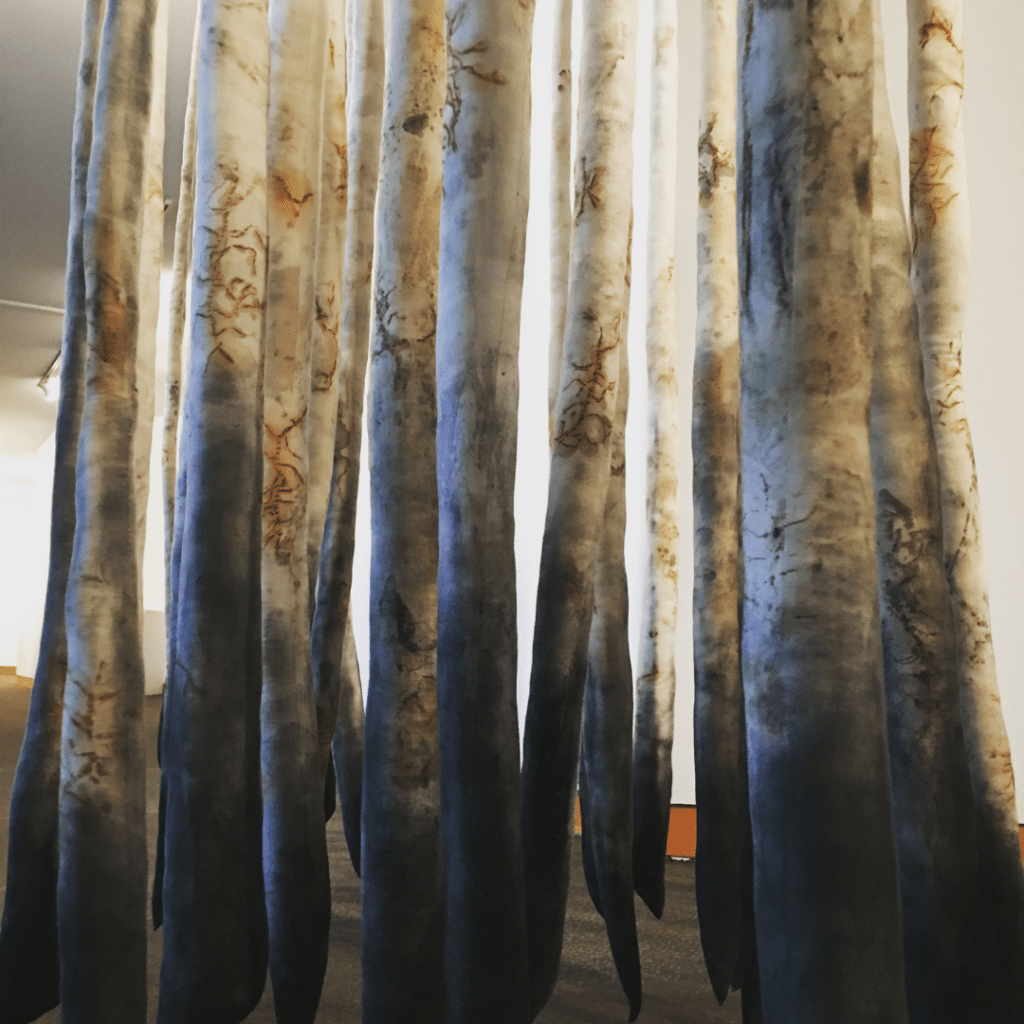
About the artist
Clarissa Callesen works primarily with post-consumer recycled materials. Everything has been discarded from its original owner or is a by-product of organic or industrial production. She is fascinated by the history and energy of objects, particularly found objects. She is less concerned with an object’s original purpose and more about the evidence of life a thing wears upon the surface. We all interact with hundreds of objects and materials daily, whether they are adored treasures or complete throwaways. Our lives are interconnected with this commonplace matter.
Clarissa’s materials inspire her work. She starts by collecting items as unconsciously as possible from my stashes, inspired by colour, texture, and shape. Some are left the way they are, but many are altered through dyeing, painting, and further distressing. The process becomes a meditative puzzle to find the connections between objects. Clarissa never knows ahead of time what the final results will be.
Clarissa teaches art and creativity to groups and individuals. She exhibits frequently, and her work has been featured in multiple books.
Join Our Newsletter
OUR YOUTUBE CHANNEL
View our interviews and more on our YouTube channel!
OUR FACEBOOK GROUP
Join our Community and stay updated with our upcoming announcements!
